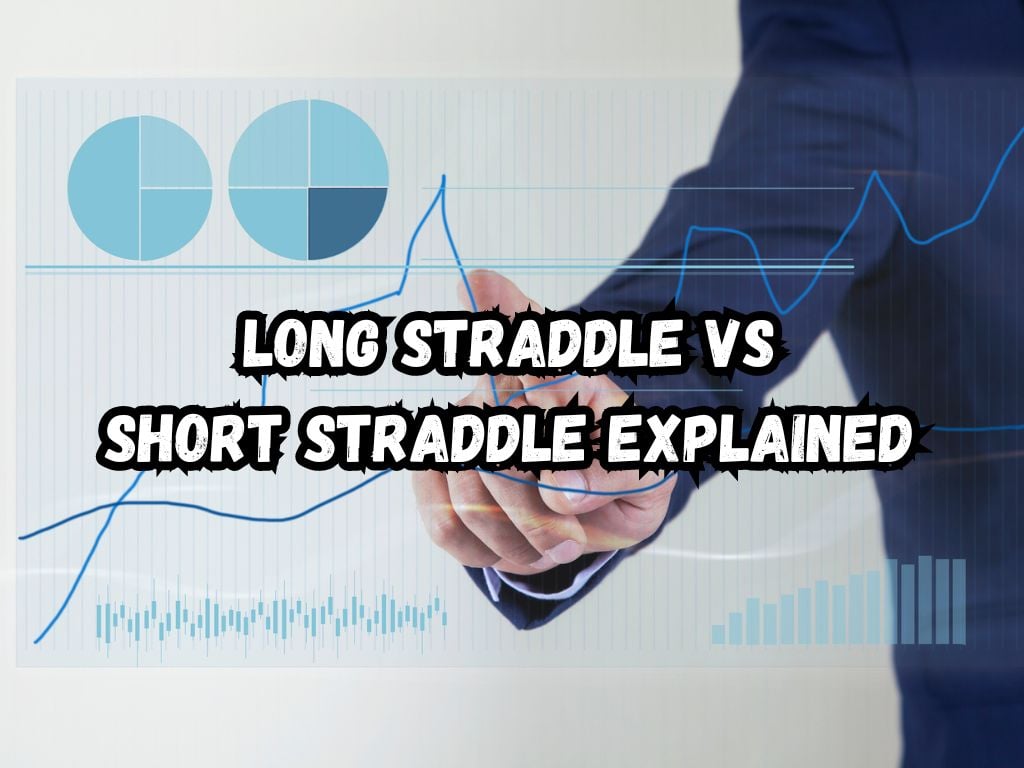The dynamic world of options trading offers tantalizing prospects for significant revenues.
Nevertheless, to steer away from potential losses and towards profitability, it involves the perceptive understanding and shrewd application of varied strategies.
Preeminent among these trading strategies are long and short straddles.
This article intends to dissect long straddle vs short straddle, shedding light on their mechanisms, providing insights into their efficient utilization, and thereby equipping you to make informed trading decisions.
What is a Long Straddle?
A long straddle is an aggressive options trading strategy that involves the simultaneous purchase of a call option and a put option.
The uniqueness of a long straddle lies in its configuration – the call and put options feature the identical strike price and expiration date, which means the strategy is “long” on both ends of the trade, thus earning its name.
This combative trading maneuver is profitable when the price of the underlying asset makes a substantial move in either direction, upwards or downwards.

Promising Conditions for a Long Straddle
The ideal conditions for implementing a long straddle strategy are when markets are displaying signs of volatility.
A turbulent market signifies that the prices of assets or securities are likely to take a dramatic swing, without a surety of the direction of the swing. The long straddle strategy thrives on this uncertainty.
The Financial Dynamics of a Long Straddle
The beauty of a long straddle lies in its potential for unlimited profit. As the price of the underlying asset moves significantly in any direction, away from the strike price, the profit increases correspondingly.
The potential loss is tethered and limited to the total premium paid for the call and the put options.
To bring the long straddle to life, let’s dwell on a practical example. Suppose you purchased a call and a put option for a stock, with each option costing a $5 premium.
Both options have a strike price of $100, and they expire on the identical date. If the stock’s price, at the expiration date, stays wedged between $90 and $110, you’d be hard-pressed to avoid experiencing a loss.
However, if the stock price takes a dramatic surge to $120 or makes a dramatic dropdown to $80, you conveniently stay in a position of profit.
What is a Short Straddle?
In contrast to a long straddle, a short straddle strategy streamlines the mechanisms differently – it involves the selling or “writing” of a call option and a put option.
Similar to a long straddle, the options in a short straddle bear the same strike price and expire on the same date.
By crafting this strategy, the trader essentially pegs their bet on the prediction that the underlying asset’s price will remain stable over time, displaying little to no volatility.
Suitable Conditions for a Short Straddle
The short straddle strategy is best called into play when the market is primarily stable, with expectations of minor fluctuations at best.
Stability in the market implies that the prices of the underlying assets or securities are likely to stay consistent or undergo marginal changes, thereby ensuring the favorability of a short straddle.
The Financial Dynamics of a Short Straddle
With a short straddle, the maximum profit a trader can ring in is equal to the premiums obtained from selling the two options.
However, the short straddle does come with a significant catch – the potential losses are theoretically infinite.
Departing from a long straddle, a short straddle strategy leaves the trader exposed to potential significant losses, as the underlying asset’s price can rise or fall indefinitely.
Let’s examine an example here to encase the principles more concretely. Assume you opted to sell a call and a put option for $5 premium each, with a strike price of $100.
If the stock price, at the date of expiration, remains nestled between $90 and $110, you register a tidy little profit.
Conversely, if the price of the stock soars to heights or plummets dramatically, you wear the stamp of a significant loss.
Long Straddle vs Short Straddle: Comparative Analysis
When distinctiating long and short straddles, risk assessment plays a pivotal role. A long straddle strategy lays out a limited risk of loss but achieves a limitless capacity for profit.
On the flip side, a short straddle leaves one exposed to a boundless risk factor, albeit with the option to rake in a fixed profit.
Equally essential in differentiating the two strategies are the break-even points. For a long straddle, these occur when the underlying asset’s price deviates in any direction from the strike price by an amount more than the total premium paid.
In the case of a short straddle, a trader reaps profits as long as the asset’s price stays within the boundaries defined by the total premium obtained.

Strategies in Action
To makes these strategies more tangible and relatable, let’s delve into two real-world scenarios. Consider the sharp spike in GameStop’s shares in January 2021, an unexpected explosion in the financial scene.
Traders had adopted a long straddle approach would have savored the sweet taste of success due to the sudden and dramatic price surge.
On the other hand, consider a more sedate and consistent player – Johnson & Johnson. Though the global pandemic reared its head severely through 2020, Johnson & Johnson’s stock price remained stoic and relatively steady.
A short straddle strategy, in this scenario, would have invariably been profitable.
Best Practices and Pro Tips
For maximizing gains, it is essential to understand, evaluate, and apply each strategy at the right time.
With the burst of digital information at trader’s fingertips, one should stay updated with market trends and unravel when to use long or short straddles.
Frequently Asked Questions
Why would a trader choose a long straddle over a short one?
A trader might choose a long straddle over a short one when they anticipate significant volatility in the market, or are uncertain about the direction of the market movement.
The long straddle, by allowing unlimited profit potential while limiting losses to the premium paid for the options, is attractive in scenarios where large price moves are expected.
This strategy caters to an investor’s desire to capitalize on market movements without committing to a directional bet, providing a cushion against wrong predictions through its inherently balanced risk profile.
What are the signs that a short straddle is the better option?
A short straddle becomes the better option when the market shows signs of low volatility and stability.
This strategy is particularly lucrative in environments where the asset’s price is expected to remain relatively constant or within a tight range.
Indicators favoring a short straddle might include upcoming events predicted to have minimal impact on the market, a lack of significant economic news, or the asset reaching a price equilibrium.
Traders adept at recognizing these stable conditions can maximize their profits from the premiums collected, banking on the likelihood of option expiry out of the money.
How do changes in volatility affect long and short straddles?
Changes in volatility have inverse effects on long and short straddles. For a long straddle, increased volatility enhances profitability, as the strategy relies on significant price movements in either direction to overcome the paid premiums.
Higher volatility means a greater chance of substantial price swings, thus improving potential returns. Conversely, a short straddle benefits from decreased volatility.
Lower volatility reduces the odds of large price movements, increasing the likelihood that both sold options will expire worthless, enabling the trader to keep the collected premiums as profit.
Is there a preferable market condition for initiating a straddle position?
Yes, the preferable market condition for initiating a straddle position depends on the chosen strategy—long or short.
For a long straddle, ideal conditions include periods of anticipated high volatility or significant uncertainty in the market direction, such as before major economic announcements or corporate earnings reports.
This environment increases the possibility of substantial price movements. For a short straddle, the preferable condition is a stable or low-volatility market, where little change in the underlying asset’s price is expected, allowing the trader to profit from the decay of the option’s time value.
Conclusion
The key takeaway from examining long and short straddles is to appreciate that both strategies can be profitable in the right market conditions.
Long straddles are tailored for volatile markets, while short straddles are ideal allies for markets that are stable or exhibit marginal volatility.
A well-informed trader, therefore, needs to be entirely cognizant of these strategies and their nuances before stepping onto the trading floor.


 Tags:
Tags:










